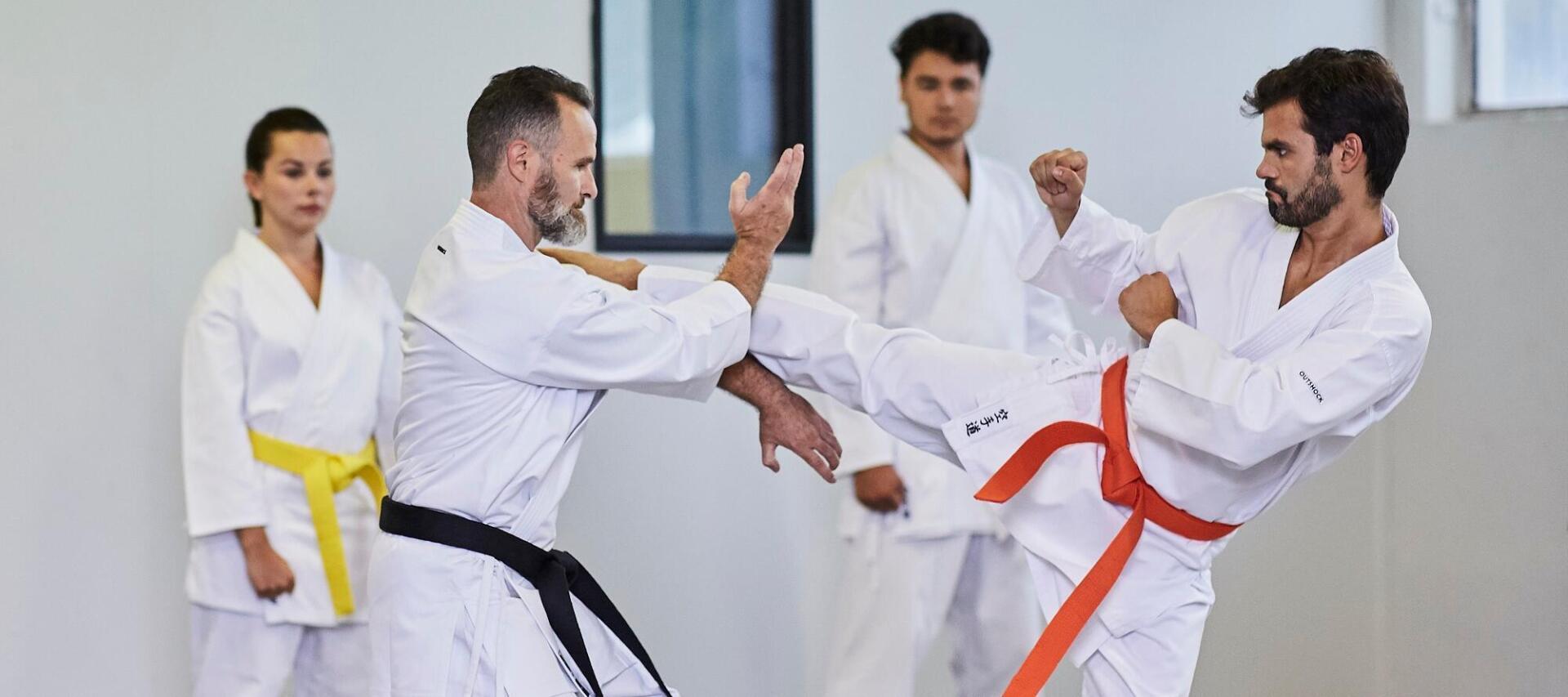Martial arts... between tradition and modernity
The oldest martial arts used to be forms of combat used in warfare - hence the name. Under those conditions, there were no rules, and certain techniques were totally adapted to the context of the time. Over time, most of them have evolved, sometimes creating new "branches" that are closer to combat sports. So it is not uncommon today to practise competitive martial arts.
Now let's look at what most often distinguishes martial arts from other disciplines. First of all, they are generally taught in a dojo. To that, we add clothing that is usually specific to the discipline. A ranking system most often allows you to distinguish each individual's level of mastery (commonly indicated by belts of different colours). Add to that certain "codes," such as greetings or rules of the dojo, and what you get is a very unique, highly traditional environment.
As far as the practises themselves, you generally find methods that stem from the origins of the martial art. This is the case with "forms," the name of which varies depending on the martial art - for example, karate calls them "kata": true pedagogical tools for practitioners' development. They are codified movements done in a pre-defined order which highlight certain techniques or structuring principles of the martial art. Technical precision reigns above all, and the interest then lies in finding the meaning of the forms in question (particularly by trying to find their applications in real conditions). These structured forms are, in some ways, the heritage of their founders.
In addition to that, training often emphasises repetitions of single techniques or pre-defined strings of movements with a partner. Finally, most styles allow you to measure yourself against other practitioners in combat, with a level of intensity that can vary depending on the discipline.
In martial arts, combat is not always an end in itself, and in some cases it can be totally absent. Moreover, instruction can sometimes move away from pure technique and approach concepts that can seem "esoteric" for the uninitiated. This is ultimately one of the features that most differentiates martial arts - the act of seeking a certain harmony between the body and mind, no matter your age.
A few examples of martial arts: Aikido, Judo, Jiu-Jitsu, Brazilian Jiu-Jitsu, Karate, Kung Fu, Tai Chi Chuan, Taekwondo, Yoseikan Budo...







